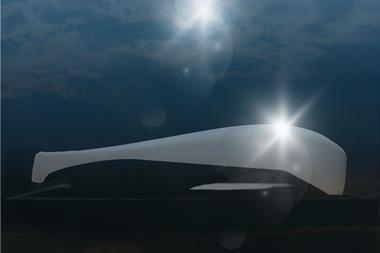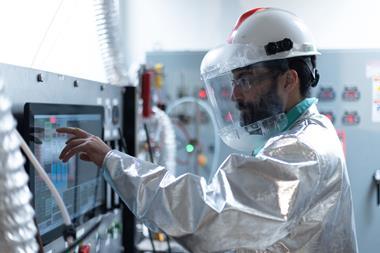Steed Webzell reviews the welding technologies prevalent in the automotive arena today, as well as those currently building momentum
Laser welding is popular for applications such as producing tailored welded blanks, largely because it is very effective at joining together steel sheets of varying thicknesses and strengths. Another popular application area is in powertrain, such as the laser welding of gears on to gearbox shafts. Here, the high power of the laser provides efficient welding with minimal distortion.
According to laser welding specialist Trumpf, powertrain components and laser welding found each other early on and are a good match. Powertrain parts have tight tolerances and are mainly machined. During machined assembly, the components are often joined mechanically prior to welding, typically by pressing or shrinking. This results in a very narrow or practically non-existent joint gap. In turn, the laser seams can bear heavy loads.
Many say that laser welding ‘arrived’ in the automotive sector with the advent of fibre-based sources. However, whether fibre- or CO2-based, auto plants have striven in recent years to boost productivity and quality, typically through the application of more advanced welding equipment and/or automation. But one area of laser welding that is often overlooked is gas.
“Gases play a crucial role in increasing productivity of laser welding and reducing costs, yet their role is often not well known or understood,” states Jim Fieret, head of application development and marketing within the Linde Group’s laser segment.
The ‘noble’ gases of helium and argon provide the key here and welding with fibre and CO2-based laser sources generates different demands. Due to the long wavelengths associated with the latter, it is easy to produce plasma, which absorbs the laser rather than performing any useful welding. The answer is to use helium, which is difficult to ionise and therefore considered the only useful gas for CO2 laser welding. Similarly, fibre laser welding, with its shorter wavelengths, benefits from the use of argon. However, there are greater subtleties involved.
During laser welding, light energy melts and literally evaporates the metal. The pressure of the vapour displaces the molten metal so that a keyhole is formed which guides the laser beam deep into the material. This allows for very deep and narrow welds and is therefore also called ‘deep penetration welding’. It is a fast welding process with low heat input and a low distortion rate.
According to the Linde Group, shielding gas plays an important role in laser welding and fulfi ls several tasks: shielding of the weld pool and the HAZ; protection of the optics against fumes and spatter; and plasma control during CO2 laser welding.

“Most auto plants performing laser welding are using either pure helium or pure argon,” says Fieret. “The results are moderately acceptable, so no one questions the potential to improve. Furthermore, these processes are often validated, which makes them difficult to change. However, by tweaking the gas composition using small doses of active ingredients, significant advantages are available. For instance, productivity gains of 10-20% are achievable, which considering the high volumes associated with the automotive industry, makes it an extremely attractive proposition.”
The hurdle of validation means that the Linde Group sees most of its results when working with auto plants from the outset to implement new gas mixtures. Alternatively, when an OEM is seeking to ‘mirror’ an existing plant elsewhere, opportunities can arise because re-validation is required.
Shielded gas arc welding remains a preferred process in many areas of the automotive manufacturing process, such as for radiators, engines, seat frames and axles – although the latter can also be produced using friction welding. Welding chassis components in-situ on the assembly line can also be facilitated by arc welding, but sometimes the higher power required means that a hybrid laser-arc welding process is preferred as this provides deeper penetration, higher process speeds, no undercut and good tolerance to joint fit-up.
Almost all automotive welding processes relate to metal, however the growing interest surrounding the use of composites in motorsport vehicles and electric cars meana it’s only a matter of time before these materials make the transition to high-volume passenger cars, especially for applications such as bumper beams, under-body panels and interior parts.
 Moulding and machining processes for composites are some way advanced, but what of welding? Well, KVE Composites Group, for instance, offers KVE Induct technology, which generates Eddy currents in the electrically conductive carbon fibre of the thermoplastic laminate. These Eddy currents are generated by moving a coil over the weld line. The Eddy currents, in turn, heat the laminate from the inside. According to KVE, this is a very efficient way to melt the thermoplastic matrix and weld two parts together.
Moulding and machining processes for composites are some way advanced, but what of welding? Well, KVE Composites Group, for instance, offers KVE Induct technology, which generates Eddy currents in the electrically conductive carbon fibre of the thermoplastic laminate. These Eddy currents are generated by moving a coil over the weld line. The Eddy currents, in turn, heat the laminate from the inside. According to KVE, this is a very efficient way to melt the thermoplastic matrix and weld two parts together.
The movement of the coil along the weld line can be achieved by commercially available systems such as industrial robots, for example. With this in mind, Kuka has shown an interest in this area via the INDUFLEX joint research project. Here, a pioneering induction welding head is combined with a jointed-arm robot as a flexible handling system. During the induction welding process, the seam quality is monitored and regulated by means of a process controller. The latest developments regarding this project are anticipated at exhibitions this year.
Composites, of course, are polymer-based, albeit reinforced. Today, polymers occupy around 50% of the volume of most new cars and some of these plastic parts require welding. Here, laser contour welding is said to brush aside the restrictions of traditional plastic welding techniques, and is suitable for parts made from ABS or a PC/ABS blend.
Unlike pure laser welding, the heat energy in hybrid welding for plastics is not only applied to the underlying, laser-absorbing component, but also to the transparent upper plastic component. This is done by pairing the monochromatic laser beam, which cannot heat the transparent joining partner directly, with long wave polychromatic halogen light. The result enables selection during the welding process itself of the optimum temperature for the material-specific melting points of the two parts being welded.
The marriage of these energy sources enhances process speed and guarantees attractive and stress-free welding seams. The more uniform heating and cooling of the two parts being joined means that the annealing process essential to release stress in other plastic welding methods can be omitted.
The secret of laser welding for plastics is the very precise application of the energy – a technique that LPKF and its partners have developed. And it has already proved its credentials in volume production with the large tail lights of the latest generation Hyundai Equus welded using this method.

A Stäubli TX90L robot oversees operations inside LPKF’s air-conditioned hybrid welding cell, in conjunction with a rotary table. Controlled by its precisely guided hand, the laser beam and halogen light meet on the workpiece. While the Stäubli robot tracks the contours of the workpiece, the integrated, pneumatically-sprung tensioning roller applies forces of up to 300N to ensure a precise locking fit between the parts being joined.
The result is reported to be a stress-free, accurate and slim welding seam without any edge fraying. Unlike other plastic welding methods, this system needs no upper die because the whole welding head, including tensioning roller, is integrated with the robot. To weld an average taillight takes just 30 seconds.





































